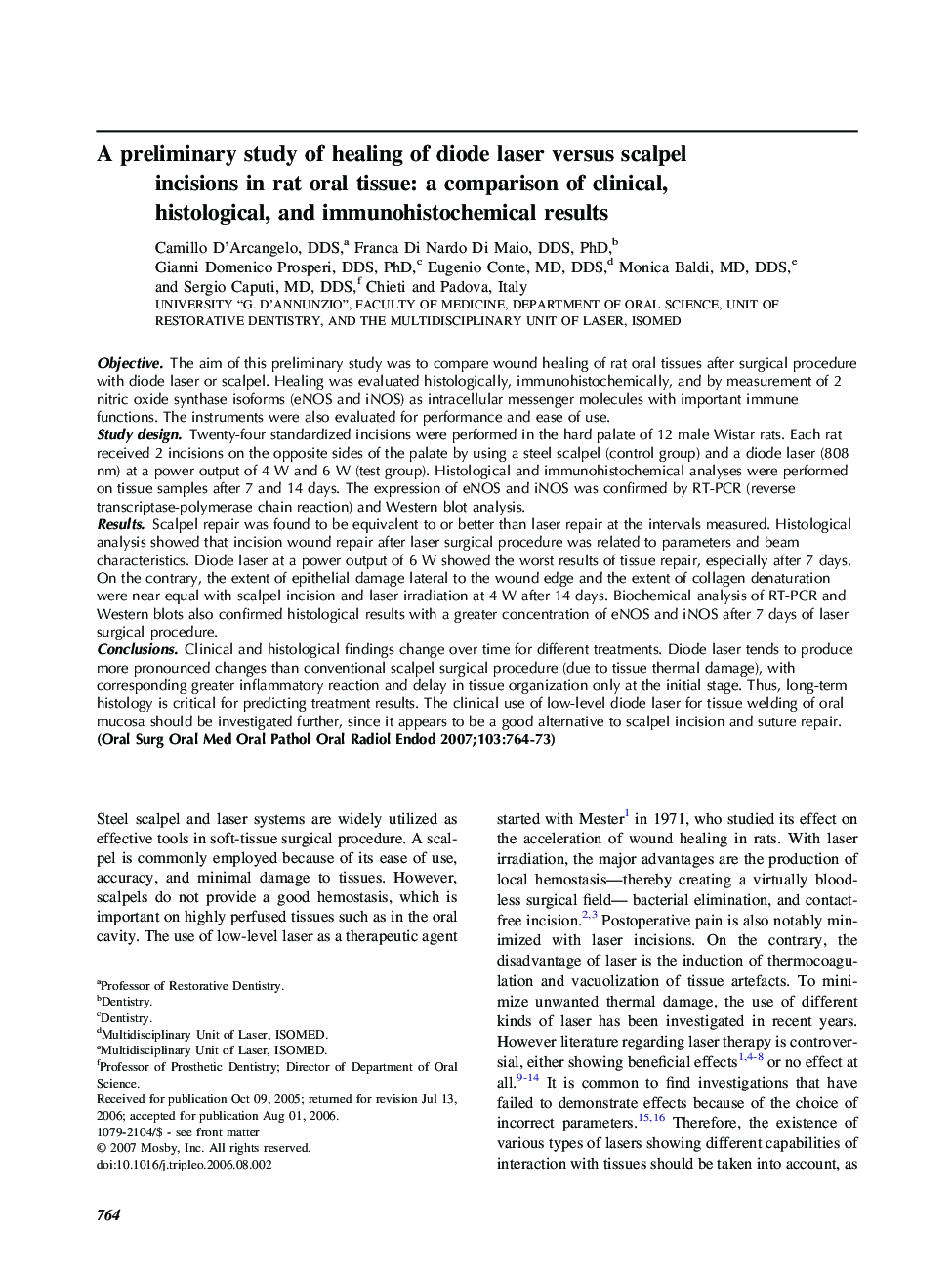| Article ID | Journal | Published Year | Pages | File Type |
|---|---|---|---|---|
| 3169341 | Oral Surgery, Oral Medicine, Oral Pathology, Oral Radiology, and Endodontology | 2007 | 10 Pages |
ObjectiveThe aim of this preliminary study was to compare wound healing of rat oral tissues after surgical procedure with diode laser or scalpel. Healing was evaluated histologically, immunohistochemically, and by measurement of 2 nitric oxide synthase isoforms (eNOS and iNOS) as intracellular messenger molecules with important immune functions. The instruments were also evaluated for performance and ease of use.Study designTwenty-four standardized incisions were performed in the hard palate of 12 male Wistar rats. Each rat received 2 incisions on the opposite sides of the palate by using a steel scalpel (control group) and a diode laser (808 nm) at a power output of 4 W and 6 W (test group). Histological and immunohistochemical analyses were performed on tissue samples after 7 and 14 days. The expression of eNOS and iNOS was confirmed by RT-PCR (reverse transcriptase-polymerase chain reaction) and Western blot analysis.ResultsScalpel repair was found to be equivalent to or better than laser repair at the intervals measured. Histological analysis showed that incision wound repair after laser surgical procedure was related to parameters and beam characteristics. Diode laser at a power output of 6 W showed the worst results of tissue repair, especially after 7 days. On the contrary, the extent of epithelial damage lateral to the wound edge and the extent of collagen denaturation were near equal with scalpel incision and laser irradiation at 4 W after 14 days. Biochemical analysis of RT-PCR and Western blots also confirmed histological results with a greater concentration of eNOS and iNOS after 7 days of laser surgical procedure.ConclusionsClinical and histological findings change over time for different treatments. Diode laser tends to produce more pronounced changes than conventional scalpel surgical procedure (due to tissue thermal damage), with corresponding greater inflammatory reaction and delay in tissue organization only at the initial stage. Thus, long-term histology is critical for predicting treatment results. The clinical use of low-level diode laser for tissue welding of oral mucosa should be investigated further, since it appears to be a good alternative to scalpel incision and suture repair.
